This article was published in the 186th issue of The Universe Space Tech magazine. It was written by Mykhailo Lashko, PhD in Pedagogy, researcher at the Department of Astrometry and Space Geodynamics of the National Academy of Sciences of Ukraine
What is interplanetary space? What is it filled with? The average reader immediately imagines an absolute dark vacuum in which planets, comets, asteroids and other bodies of the Solar System are floating. In fact, this is not quite true.
If we formulate a purely scientific definition of the term, interplanetary space is the space that exists between the Sun and the planet farthest from it, i.e. Neptune. Its “lower boundary” is usually taken to be the conditional boundary of outer space, which begins at an altitude of 100 km above the Earth’s surface. It is not completely empty, not an absolute vacuum: this space is filled with a large number of different particles, including neutral hydrogen and helium atoms, hydrogen and helium plasma (the main components of the so-called solar wind), various electromagnetic radiation, magnetic fields, neutrinos, various types of interplanetary dust particles, stones, meteorites, cosmic rays.
But the path to this understanding of interplanetary space was quite difficult. The ancient Greek philosopher Parmenides, who denied the existence of emptiness, and Aristotle wrote that the Universe is not empty. Subsequently, Aristotle formulated the doctrine of the aether, which fills outer space and through which celestial bodies move freely. Medieval science inherited the ideas of antiquity almost unchanged: in particular, Giordano Bruno and Nicolaus Copernicus, as well as a number of other astronomers of the time, were convinced that the universe was filled with “world aether”. This notion persisted in science until almost the end of the nineteenth century, and only the convincing results of the Michelson-Morley experiment completely refuted this theory, paving the way for modern views.
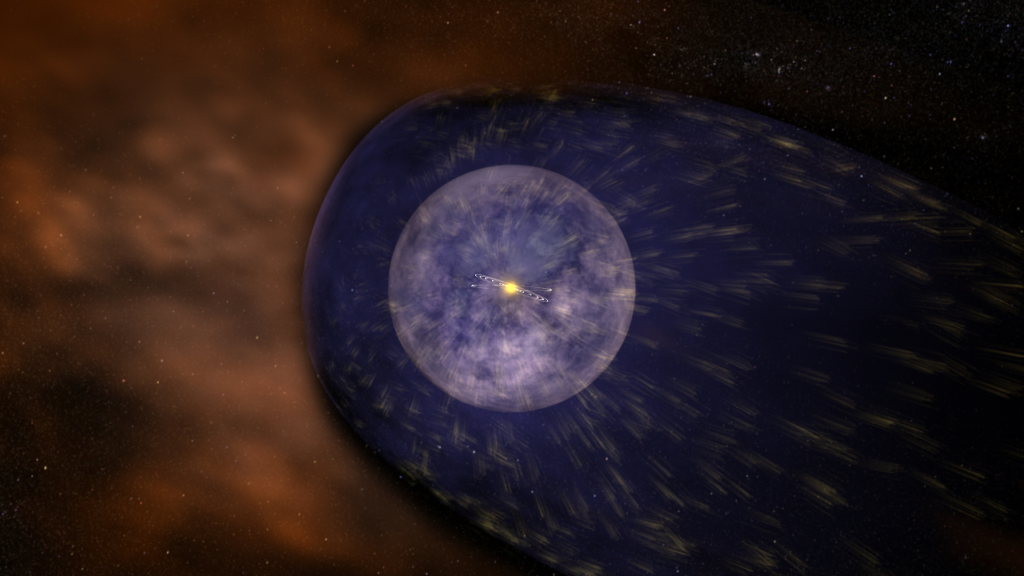
As for the direct exploration of interplanetary space by humans, this opportunity arose only in the second half of the 20th century. With the launch of the first artificial satellite, active exploration of first near-Earth and then interplanetary space began. For such studies, almost exclusively automatic vehicles are used. This is not surprising, as interplanetary space is a very unfavourable environment for life — humans are exposed to dangerous effects of vacuum and radiation. Some of these spacecraft (Pioneer 10 and 11, Voyager 1 and 2) have already gone beyond the Solar System.
The most important “filler” of interplanetary space is the solar wind, a plasma flow from the solar corona that fills almost the entire heliosphere. It consists of electrons, protons, and ions captured by magnetic fields and formed as a result of interaction with radiation. The solar wind is highly turbulent and its effect is quite uneven.
Interplanetary space has a serious impact on the bodies in it and the processes that take place in it. It has a complex structure caused by solar activity. During chromospheric flares, streams of ionised gas, plasma, X-rays, ultraviolet radiation, and radio waves of various lengths are released into space. With increasing distance from the Sun, the strength of the solar wind decreases, proton fluxes weaken, but their speed remains constant. Its interaction with the planets and small bodies of the Solar System affects their magnetic fields and the state of their outer plasma shells. The nature of this influence directly depends on the properties of these bodies (in particular, on the presence of a magnetic field), and it also weakens with distance from the Sun.
The Earth’s magnetic field protects us from most of the harmful effects of the solar wind. Interaction with it results in magnetic storms — disturbances of the Earth’s magnetic field. The auroras are a striking manifestation of such disturbances.
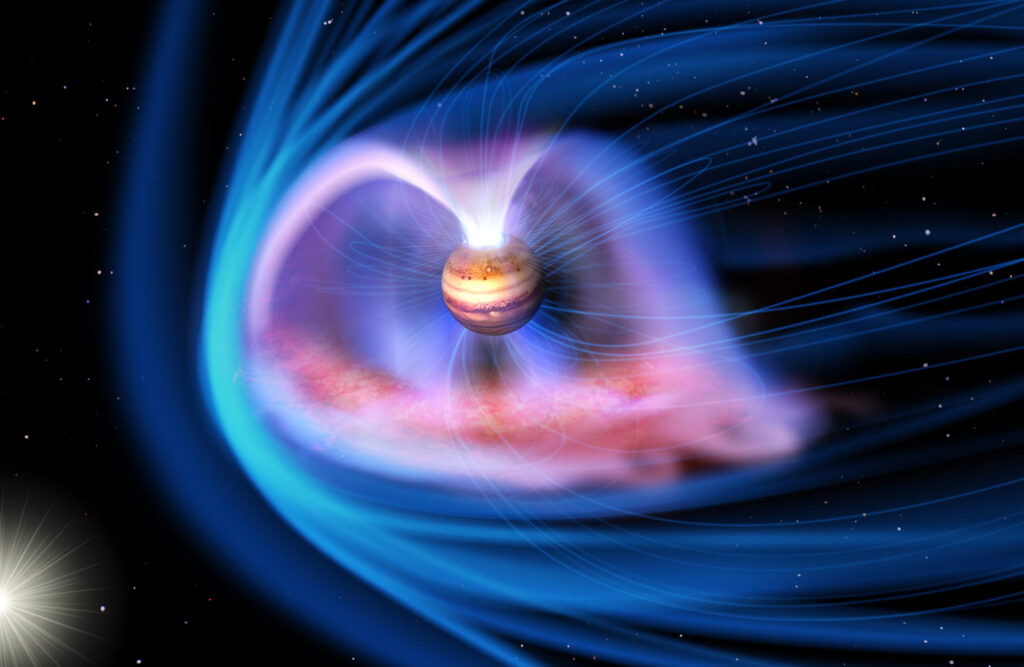
The properties of the interplanetary environment are quite specific. It has the characteristics of a plasma rather than an ordinary gas. Due to this, the strength of the Sun’s magnetic field in Earth’s orbit is significantly higher than calculated, and if interplanetary space were an absolute vacuum, this figure would decrease much faster as we move away from our star.
The interplanetary environment is also influenced by the magnetospheres of the large planets, in particular, Jupiter and Saturn. Each of them has such a powerful magnetic field that it dominates the magnetic field of the Sun in a large enough area of space, which introduces perturbations in the solar wind flows that cause auroras on the giant planets.
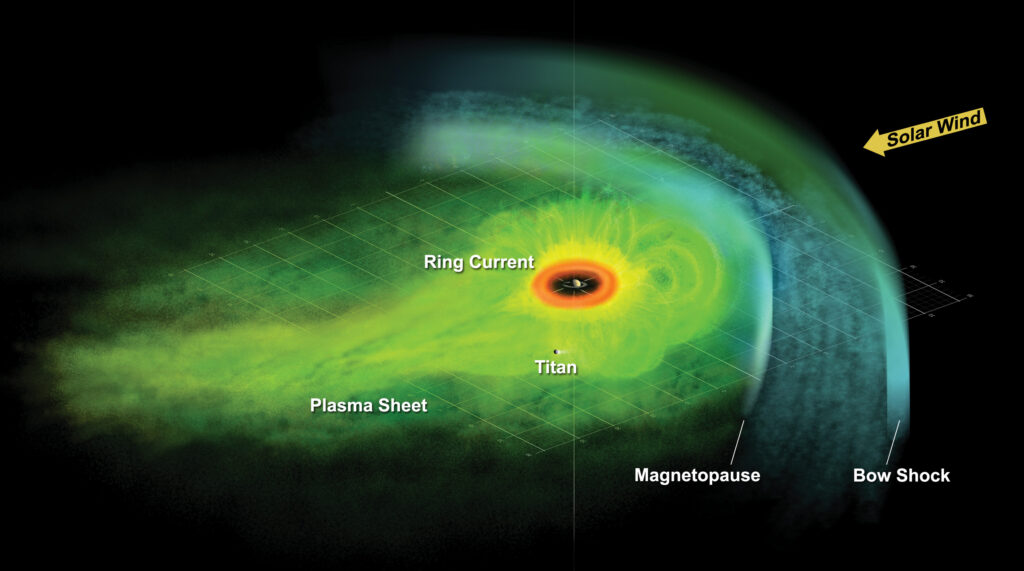
If interplanetary space were a vacuum, the temperature in it would be equal to the temperature of relict radiation — 2.7 degrees Kelvin, or -270.45°C. In fact, the heating of particles in this space depends primarily on their distance to the Sun. For example, the average temperature of dust particles in the Main Asteroid Belt can range from 200 K in its inner regions to 165 K in the outer regions.
Another category of “population” of interplanetary space is interplanetary or cosmic dust, which is the main source of meteor showers (i.e., flows with an intensity of more than 1000 meteors per hour). Its particles that reach the Earth’s surface are called micrometeorites. Their size ranges from a few molecules to 0.2 µm, and their shape varies from an almost perfect sphere to porous fragments with sharp corners.
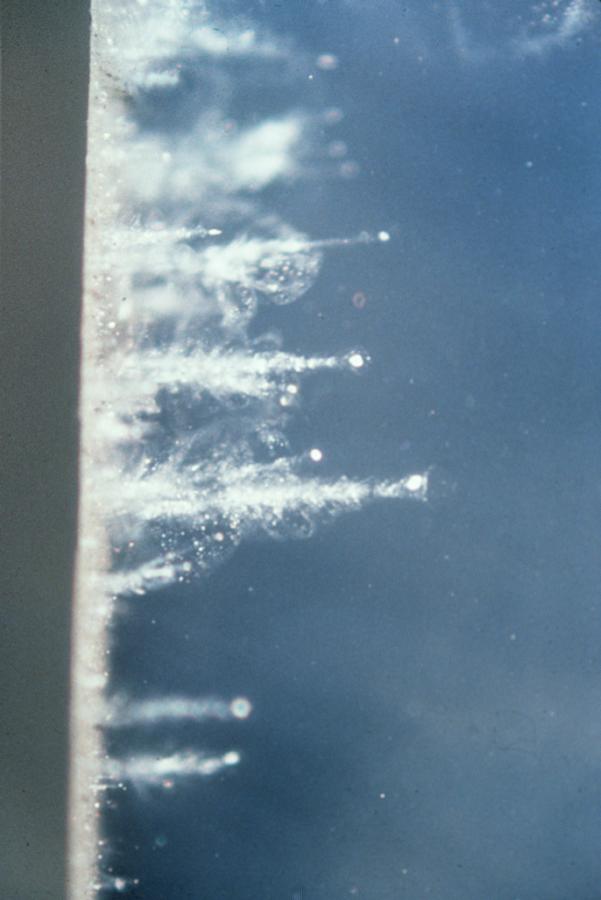
According to various estimates, from 60 to 100 tonnes of space dust falls to the Earth’s surface every day, which translates into 25-40 thousand tonnes per year, or an average of 8.6 g per square kilometre. The easiest way to study these “microscopic aliens” is to extract them from the perennial glaciers of Antarctica and Greenland. By studying their concentration in different layers of ice, it is possible to trace the relationship between the amount of interplanetary dust and solar activity, as well as the appearance of bright comets and other factors.
Dust particles that do not have their own magnetic field (the vast majority of them in interplanetary space) are exposed to the merciless effects of solar wind and cosmic radiation. As a result, due to the powerful bombardment of high-energy particles, interplanetary dust itself becomes a source of weak radiation.
Dust occupies the entire interplanetary environment, but it is distributed very unevenly. Its main mass is located near the Sun in the inner part of the heliosphere and near the ecliptic plane. This includes, in particular, asteroid dust (the result of asteroid collisions and their partial destruction), cometary dust (a product of cometary activity ejected by comet nuclei as they pass through the inner regions of the Solar System), and interstellar dust, that gets into the Solar System as it moves through the Galaxy, and beta meteoroids — small particles for which the pressure of solar radiation is comparable to the gravitational pull, so it slowly pushes them out of the Sun’s sphere of attraction.
Dust also plays its own role in the interplanetary environment — in particular, it partially scatters sunlight and absorbs thermal radiation. According to some estimates, the total mass of dust in the Solar System is equal to the mass of an asteroid with a diameter of about 30 km.
A clear proof of the existence of interplanetary dust is the phenomenon of zodiacal light. In our latitudes, it can be observed in spring after evening twilight and in autumn before dawn. The nature of this phenomenon is associated with the reflection of sunlight from the surface of numerous dust particles in the interplanetary medium (mainly between the Earth and the Sun).
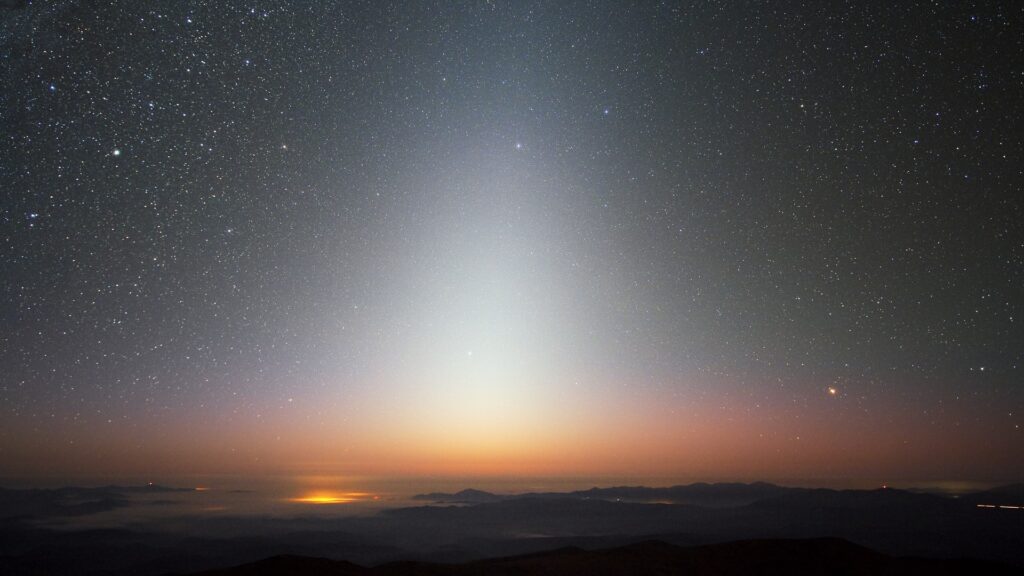
The study and analysis of cosmic dust allows scientists to obtain information about the formation and evolution of the Solar System. It also plays an important role in the early stages of star formation and is involved in the formation of exoplanets. Particles of interplanetary dust are part of the rings of Jupiter, Saturn, Uranus and Neptune, and they constantly bombard cometary nuclei and asteroids, gradually destroying them and enriching them with matter at the same time.
A unique feature of cosmic dust is that it is virtually indestructible in the dense layers of the Earth’s atmosphere. Micrometeorites larger than one hundred micrometres are slowed down when they enter the upper atmosphere, so they hardly burn and fall to the Earth’s surface without damage, and therefore are an extremely important source for studying the origin and primordial nature of the Solar System.

